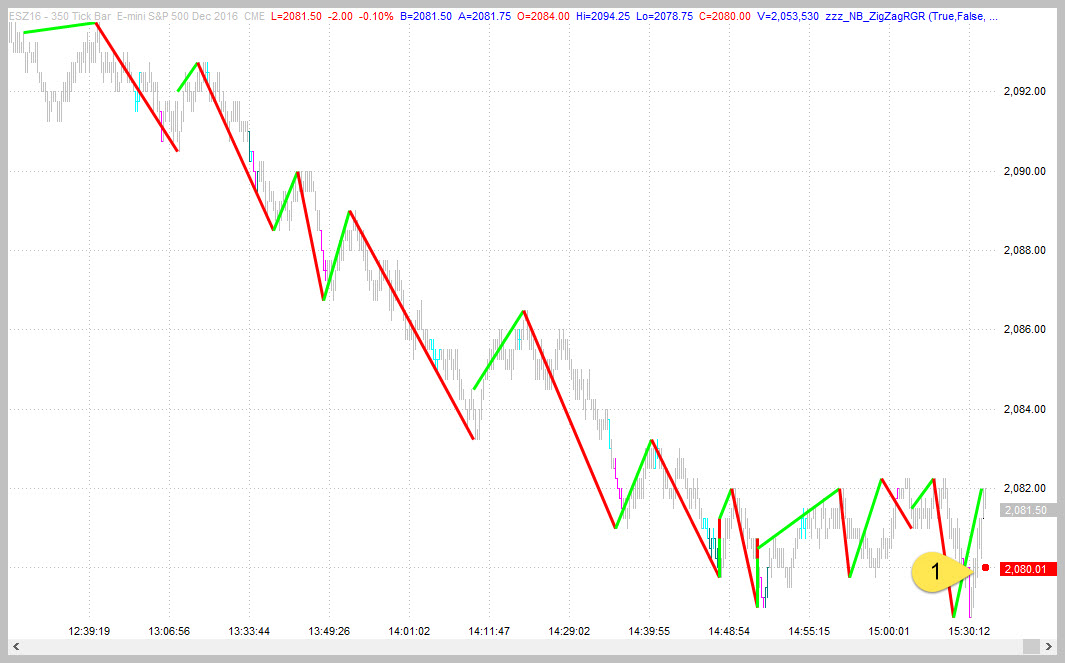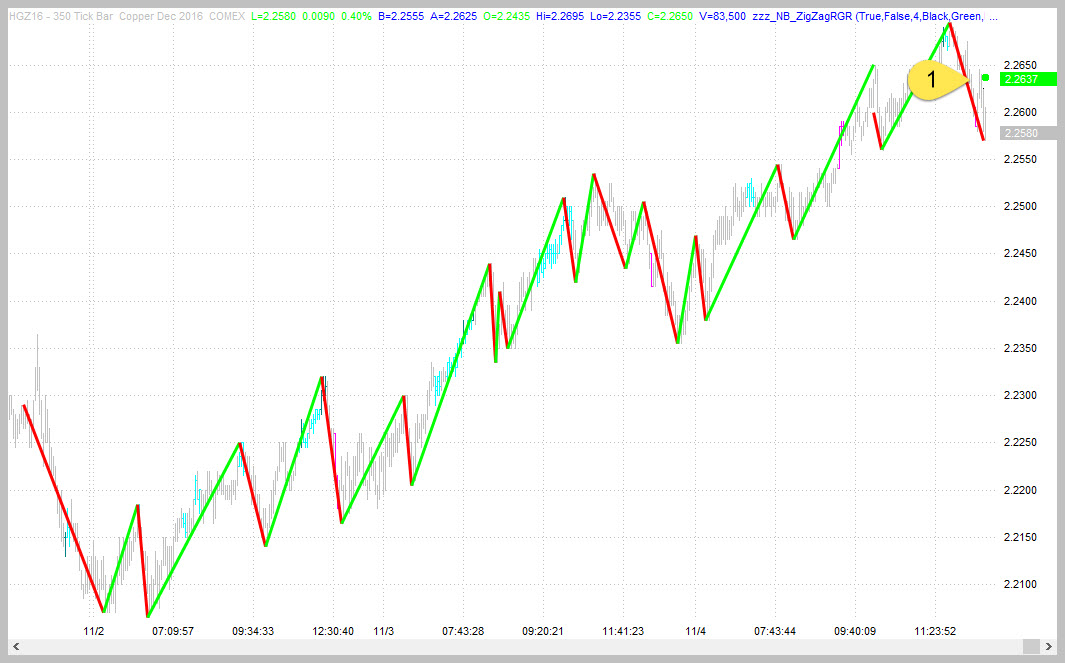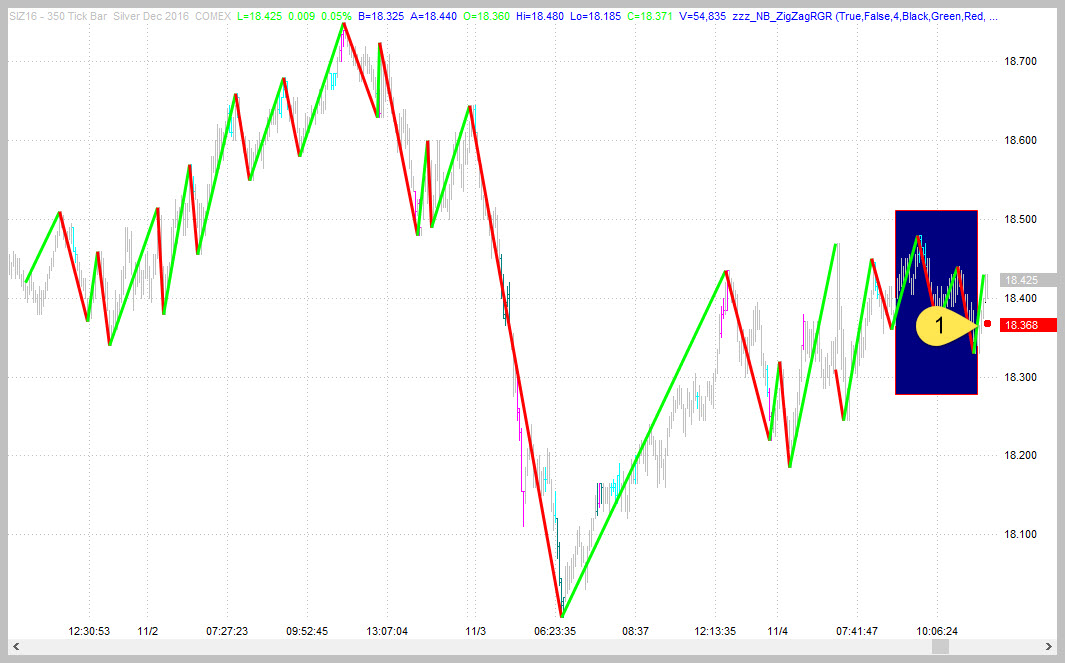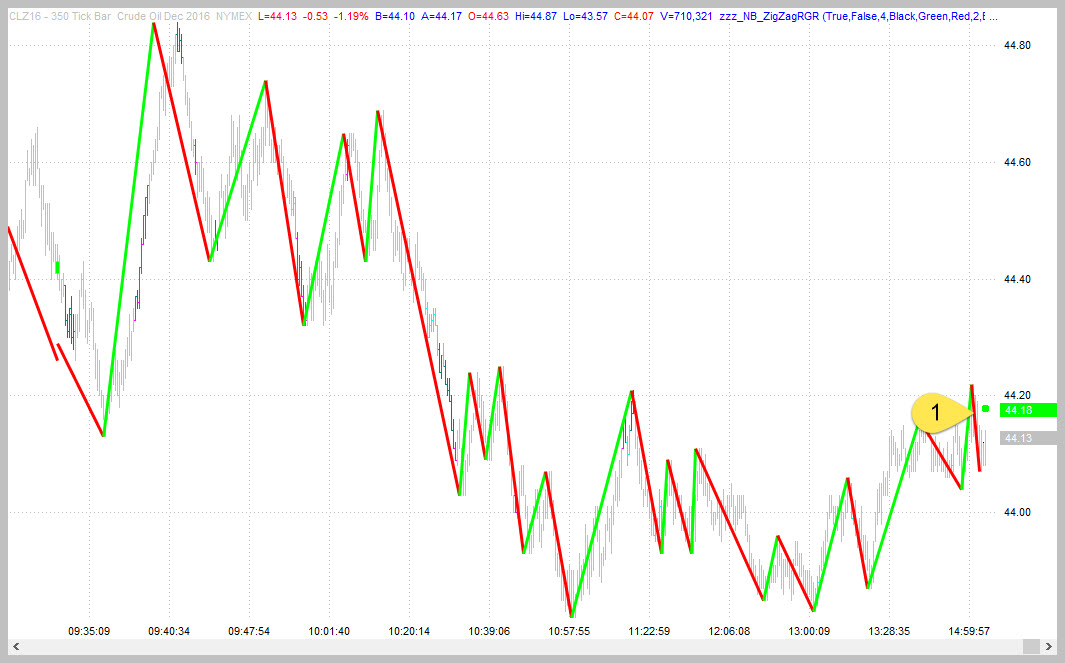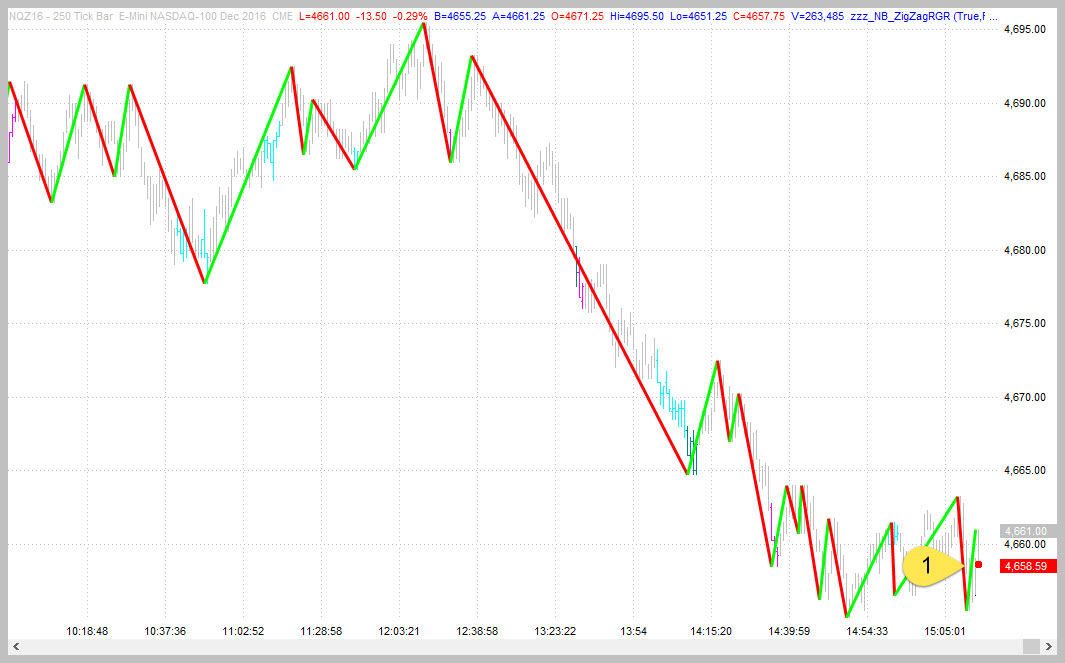Master Day Trading in Just 30 Days: Lesson #11
11
Lesson #11
This is the lesson where we start to have some fun! The last few lessons showed you how to eliminate the noise from charts by filtering price movements based on the current market volatility. These resulted in “zig-zag” lines.
As a result of this, you can now layer a dominant trend on top of any chart – this was the topic of the prior lesson. Two traders looking at the same chart will arrive at the same conclusion for the dominant trend – there is no ambiguity.
This is very powerful because it tells you what kinds of trades you should be making – long trades or short trades. Today, we’re going to show you how to make small scalp trades in the direction of the dominant trend on the chart. We’re only going to use one time frame in order to make these trades so use your SIMULATOR account for your practice session. Later we’ll show you how to use two time frames or support and resistance to improve the probability statistics of your trades – at that time you will be able to make trades in your LIVE account.
How To Make A Short Scalp Trade
The chart above is in a very clear down-trend. Price is currently in an upswing (“green”). However at some point price is going to switch to a red swing. This will occur at point #1 (around 2080 or 2079.25). When that occurs, a short trade can be entered with the protective stop above the most recent swing high that formed.
Now, point #1 is a moving target. Until price closes below it and you see the red bar formed you cannot enter the trade. It is a moving target because price can move higher on the green swing which will move point #1 higher. Or price can go sideways which can also move point #1 a bit higher. You can’t really tell when a red swing is going to form until price actually closes below the designated point, forming the red bar that we’re looking for.
Tip: Point #1 is defined as 2.5 ATRs below the highest high of the last 16 bars. You might need to go back and look at prior lessons to refresh your memory – it’s been a while since we’ve covered this.
Once a trade has been entered, you should quickly set your exit target. This is a 350 tick chart which is an ultra-small timeframe. It means that you should probably set an exit for 1-2 ticks! On the ES that is still a nice profit of 25 dollars on just a single contract. Trading 10 contracts gives you a profit target of $250.00.
The only way you can get your orders in that rapidly is if you use your trading platform to create macros – a single keystroke to enter the market order and both the stop and target orders as OCO. Now you can see why we had you do all those practice sessions early in the lesson series!
Now, the stop point will likely be 2+ points higher. This means that you could be risking 100-150 dollars to make 25 dollars. Ouch. Actually, its not that bad – it just means that for scalps, you expect your win rate to be above 80% in order to be profitable. For scalp trades, this is what you would expect. The smaller the target, the higher the win-rate!
It is a much differnet probability profile than, say, breakout trades where your realistic win rate is aroudn 40% or even less.
Understanding the probilities behind different trading styles is the subject of a different lesson. This is just a taste of one of the decisions you’ll have to make behind each trade.
“The best time to make a scalp trade is just after a trend change. The first pullback after a trend change is always considered a high-probabilty trade!”
How To Make A Long Scalp Trade
The above chart is clearly in an uptrend with a pull-back underway. A long trade will be entered at point #1 when price closes to create a green swing. The protective stop will go below the swing low that is created. As with all scalp trades, you should enter your target order immediately.
Summary Of The Rules
- Determine the trend
- Wait for a pullback in the trend (if up-trend, wait for a red swing; if down-trend, wait for a green swing.)
- Wait for the first bar that shows impulse back in the direction of the trend. For up-trends, wait for a green bar to be formed. For down-trends, wait for a red-bar to be formed. Enter your trade.
- Set your target a couple of ticks above your entry.
- Set your protectiv stop above/below the newly established swing high/low.
Three more examples…
Here are three more examples where you can make scalp trades. Click on each image for a “lightbox” where the title will describe the scalp trade.
A Word Of Caution
Each of the above examples were shown without context. In other words, we did no qualify each trade by looking at the higher timeframe or what other support or resistance areas there might be on the chart. We will cover these later.
For now, we need you to understand the idea and get comfortable with the concepts behind scalp trades.
Questions About Scalp Trades?
We realize that some of this might seem a bit confusing! if you have questions about concepts presented in this (or any other) lesson article, contact us for a one hour coaching session. You’ll be surprised how much you can learn in 60 minutes!
Homework
Your homework is simple – I am sure you can guess what it is. Using your simulator, make 25 scalp trades. Please make sure you use your trading platforms macros to automatically enter your target and protective stop on each trade.

Terminology
Photograph provided by shutterstock.com
Terminology
There are no new definitions or terminology for this lesson. You’ll have your hands full with the practical – making scalp trades.
How do you feel after you have completed this exercise? Let us know by using our contact form! We would love to hear from you!

Wrap Up
In principle, scalp trades are easy to understand. You wait for a pullback in a trend and then you wait for the trend to reassert itself. As soon as price moves far enough that the probabilty of the trend re-asserting itself is high, you enter a trade and try to take a small piece out of it.

Coming Up Later
- Selecting scalp trades
- Managing scalp trades
- Using multiple time-frames to fine-tune your trading entries
- Determining how to set your stop points and the trade-offs of each tactic
- Understanding trading as a numbers game

